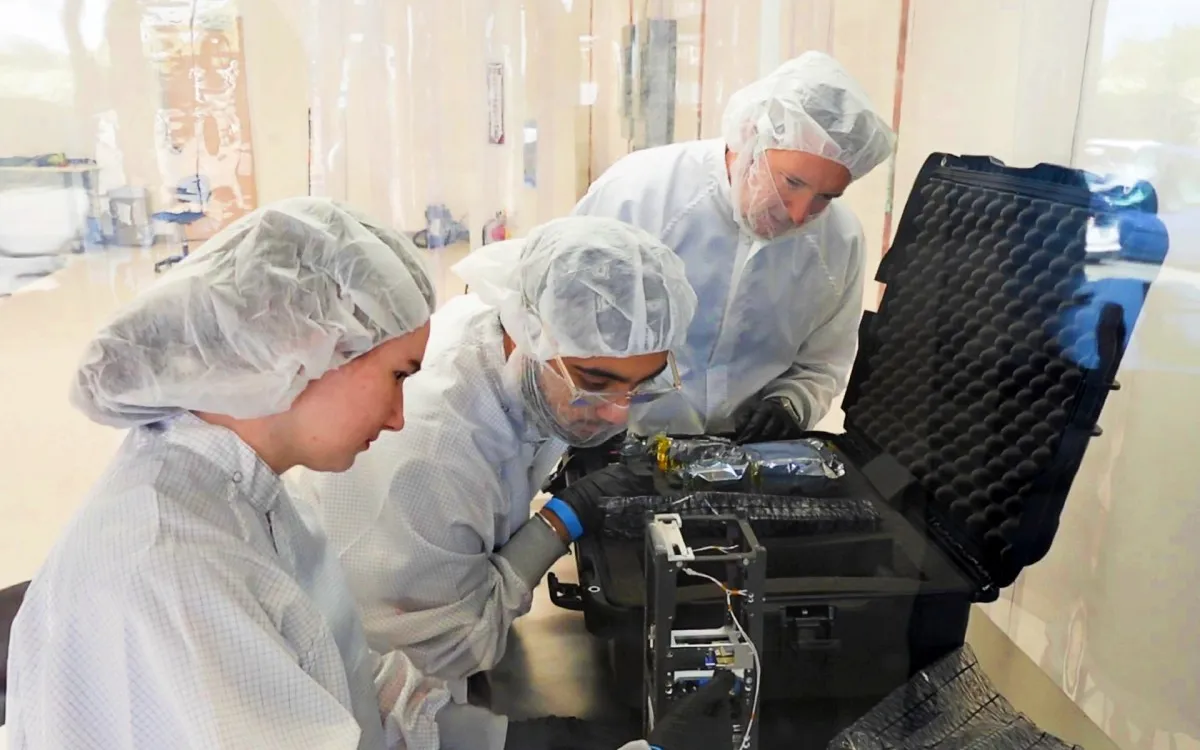
Apolink, a groundbreaking space-tech startup supported by Y Combinator, has successfully raised $4.3 million in an “oversubscribed” seed funding round. The funding values the company at $45 million post-money. Founded by a 19-year-old entrepreneur of Indian origin, Onkar Singh Batra, Apolink is poised to develop a real-time connectivity network specifically for satellites operating in low Earth orbit (LEO).
The primary focus of Apolink is addressing a significant issue in space communications: the frequent offline periods of satellites during their orbits. These interruptions occur due to dead zones—times when satellites fall out of the line of sight from ground stations. Although existing solutions like relay satellites and global ground station networks mitigate some of this downtime, they often fall short of providing comprehensive coverage. As the space industry progresses, the need for reliable connectivity has become increasingly urgent.
Traditionally, NASA relied on its Tracking and Data Relay Satellite (TDRS) system to maintain near-continuous contact with satellites in geostationary orbit. However, in 2022, the agency announced plans to phase out TDRS and transition to partnering with commercial providers for satellite communications. Most of these commercial systems still focus primarily on geostationary or medium Earth orbits, leaving a significant gap that Apolink aims to fill.
Apolink, formerly known as Bifrost Orbital, seeks to offer 24/7 connectivity to LEO satellites, with plans for each orbital ring to accommodate up to 256 users at a rate of 9.6 kbps. According to founder Onkar Singh Batra, “LEO has its own advantages. It’s much closer than geostationary orbit, which means closing the link between the customer satellite and our constellation is much easier.” This close proximity reduces power requirements and enhances compatibility, making it an ideal solution for modern satellite communications.
Batra's journey in the space sector began at the young age of 14 when he developed a keen interest in the field. By 2022, while still in high school at a defense institution in Jammu, India, he created InQube, India’s first open-source satellite. He also served as a guest professor at IIT Jammu, educating engineering students on space ecosystems. During his early projects, Batra identified the connectivity challenges faced by satellites and recognized that existing solutions lacked backward compatibility.
According to Batra, the current landscape of inter-satellite links (ISLs) suffers from interoperability issues and does not meet the Space Development Agency’s requirements. “We solve this through our hybrid-RF optical architecture and a no user terminal, hardware-independent approach,” he explained. While some startups have attempted to build new ground stations to solve the dark zone problem, Batra argues that these solutions are often cumbersome and fail to guarantee a reliable 24/7 link.
Founded in 2024 and based in Palo Alto, Apolink’s strategy involves deploying a constellation of 32 satellites equipped with lasers and radios to facilitate connectivity, even for satellites lacking specific hardware. The startup’s name, Apolink, signifies “Apogee-plus-link,” reflecting its mission to provide nearly 99% uptime with latency as low as 10-15 seconds. Once the network is fully operational, Batra expects latency to decrease to just 2-3 seconds.
While competitors like Amazon’s Kuiper and SpaceX’s Starlink are also developing inter-satellite links, Batra points out that most of these companies do not specifically dedicate their resources to virtual relays. Consequently, they often offer limited bandwidth to customers and require the installation of optical terminals for connectivity. “Other ISL players focus on Ku/Ka-band and use optical terminals for EO image downlink, and we don’t,” he stressed.
Apolink has secured its own FCC license, which simplifies the licensing process for clients. In addition, the startup manufactures its satellite components, such as lasers and radios, in-house to ensure compatibility with its innovative algorithms.
In Q2 2026, Apolink plans to launch its initial demonstration mission through a SpaceX rideshare, featuring a 3U technology demonstration satellite named LinkONE/IPoS. This mission aims to validate the backward-compatible radio-frequency relay in low Earth orbit. A second demonstration mission is anticipated in June 2027, which will include two satellites. By 2028, Apolink intends to roll out its commercial constellation, with the complete network of 32 satellites expected to be operational by 2029.
Despite being in its early stages, Apolink has already garnered over $140 million in letters of intent from various companies in the Earth observation, communication, and spatial data sectors, including notable names like Astro Digital and Hubble Network. The recent seed funding round was backed by investors such as Y Combinator, 468 Capital, and several angel investors, including industry leaders like Laura Crabtree and Benjamin Bryant.
With a dedicated team of four experienced professionals, Apolink is currently focused on spacecraft integration and testing while collaborating with early partners to validate its innovative system in orbit. The future looks promising for Apolink as it aims to revolutionize the satellite connectivity landscape.